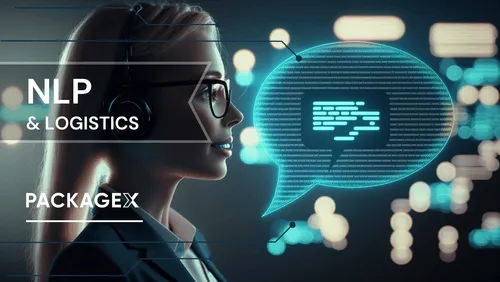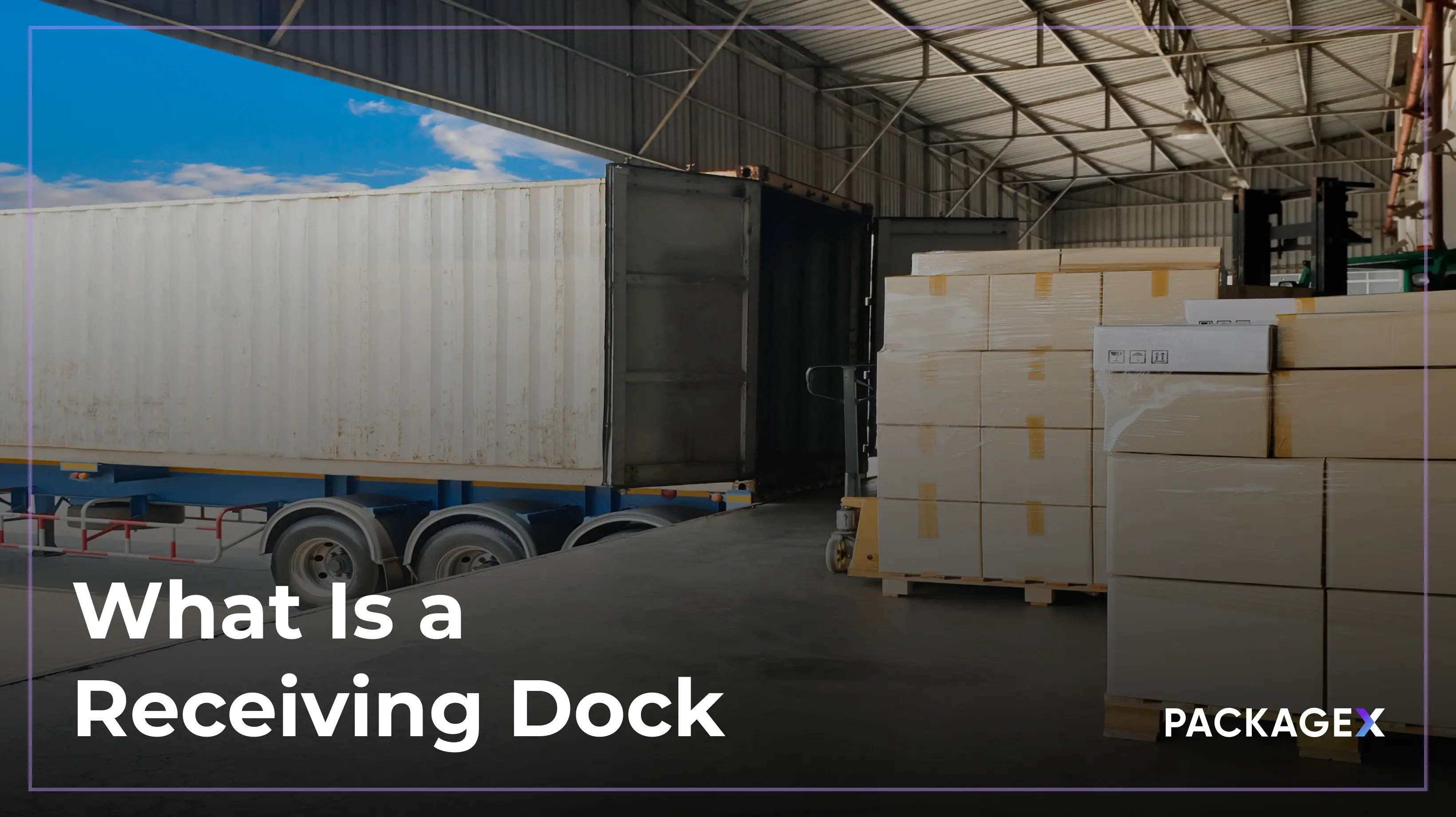Natural Language Processing (NLP) is a domain of artificial intelligence (AI) that gives machines the ability to read, understand, and derive meaning from human languages. It's a technology that's playing a pivotal role in decoding the vast data involved in logistics management.
In logistics, NLP improves efficiency and accuracy in several applications. From translating foreign shipment details and interpreting customer inquiries in real-time to enabling voice-activated commands for warehouse operations, NLP is transforming how data is handled across the supply chain.
In this article, we explore how incorporating NLP into your logistics operations can minimize delays, reduce human error, and enhance customer service by streamlining communication processes.
Evolution of natural language processing in logistics
Early adoption
Tracing the first use of NLP in logistics is difficult due to the expansive and varied nature of the logistics industry. However, several large enterprises such as UPS and FedEx started to experiment with NLP applications to streamline various operations.
These companies initially used NLP for tracking packages using voice-activated systems. Customers could call and vocally state their tracking number to receive real-time updates about their shipments. Over time, this technology was extended for use within the company, from voice-directed warehousing operations to natural language chatbots that handle internal queries about inventory levels and shipment scheduling.
Modern Applications
Natural Language Processing is no longer a tool only for large corporations with deep pockets. Thanks to the advent of cloud computing and services like Google Cloud NLP, IBM Watson, and others, the power of NLP can be harnessed for a broad range of applications within logistics. Below are three key areas where NLP shines.
Components of NLP in Logistics
Component #1: Language modeling and tokenization
A pivotal first step in the application of NLP is language modeling. These models, often designed using deep learning, are trained on vast datasets including industry-specific documentation, text, or speech.
Tokenization is a sub-process that breaks down sentences into smaller pieces, often words or sub-words, called 'tokens.' In the logistics world, this allows NLP systems to understand terms like "ETA" (Estimated Time of Arrival) or "POD" (Proof of Delivery), which are essential for operations such as route optimization or shipment tracking.
Consider the use case of automated email processing. Logistics companies receive thousands of emails related to orders, tracking, and invoices. A language model would tokenize these emails, understand the context and the terminology used, then proceed to the next stages of NLP for further action.
Component #2: Text classification and sentiment analysis
After tokenization, the next step is text classification. This involves categorizing incoming text data into predefined classes, such as 'Invoice Query,' 'Shipment Update,' or 'Customer Complaint.'
Sentiment analysis, a specialized form of text classification, gauges the emotional tone behind text data. This can be especially useful for customer service applications and communication between logistics partners.
For example, a receiver of goods can use AI agents to contact logistics partners about their location and estimated time of arrival. With sentiment analysis, this experience is preferred over tracking apps.
After each conversation, we analyze the sentiment of the entire interaction using sentiment analysis AI. This analysis helps PackageX determine if the conversation was positive or negative and enables recipients to retain or replace the AI agent accordingly as each agent can have a different “personality”.
- Farrukh Mahboob, CEO @ PackageX
{{returns-webinar}}
Component #3: Named entity recognition
Named entity recognition (NER) is a specialized task that identifies particular entities in a string of text, such as names, time, geographic locations, or even specific logistics terms like 'SKU' or 'Tracking Number.' This is highly relevant in logistics where precise terminology is often crucial.
NER can be vital in automating the processing of customs documentation. An NLP system could scan documents to find and highlight terms like 'Country of Origin,' 'HS Code,' and 'Import Duty' to speed up the verification and submission process.
For one of the world’s largest malls, PackageX used NER to create a system that extracted important attributes from customer receipts. The system extracted attributes with over 95 percent accuracy to help the company quickly convert information on paper to valuable business data.
Component #4: Information extraction and text mining
Information extraction is the process of automatically extracting useful information and relationships from unstructured data. This component could be particularly useful for sifting through extensive textual documents, such as contracts or supplier agreements, to quickly pull out relevant information. Text mining goes a step further, aiming to discover new insights or patterns from text data.
Logistics companies can employ text mining techniques to analyze shipping labels.
Below is an example of a common shipping label that a text mining algorithm can derive valuable insights from that the naked eye would miss.
To apply text mining, information is first extracted with optical character recognition (OCR) technology.
What follows is the raw OCR response from the shipping label above.
E\n\nPart # 156148-434 MTW EXP 02/23.\n\nORIGIN ID: JDYA (562) 946-1718\nWAREHOUSE\nCOMPULOCKS BRANDS INC.\n9115 DICE ROAD UNIT #18\n\nSANTA FE SPRINGS, CA 90670\nUNITED STATES US\nTO KYLE GRZYBOWSKI\n\nAll\n\nPACKAGEX\n500 7TH AVE 8TH FLOOR\n\nNEW YORK NY 10018\n\n(586) 260-2409\nTHU:\nPO: 4000210651\n\nTRK#\n0201\n\nAZ\n\nREF: SH22A004573\n\n2718 2716 2523\n\nH2 MTPA\n\nSHIP DATE: 08APR22\nACTWGT: 23.00 LB\nCAD: 253334140/WSX13600\nDIMS: 16x14x10 IN\nBILL SENDER\n\nDEPT:\n\nFedEx\nExpress\nE\n\nULUIGUI\n\nTUE-12 APR 4:30P\n** 2DAY\n**\n\n10018\nNY-US EWR\n\nShipBush\n
Without text mining applied, the OCR response doesn’t present any meaningful information to the end user. Only after the algorithm is applied can usable information become available, as shown in the examples below.
The screenshot on the left includes meaningful information about the package and receiver while the image on the right includes meaningful information about the sender, as well as logistics attributes.
Component #5: Conversational interfaces and chatbots
Conversational interfaces, such as chatbots, are often the most visible applications of NLP. These systems can interpret natural language queries and respond, thereby simulating a conversation.
Many logistics companies now offer chatbot-based customer service to handle common queries like tracking shipments, estimating delivery times, or scheduling pickups. The chatbot can interact with customers through text or voice, providing quick and efficient service.
Component #6: Translation and multilingual support
In the global landscape of logistics, the ability to understand and interpret multiple languages is invaluable. NLP systems with multilingual capabilities can automatically translate incoming queries or documents, breaking down language barriers that might otherwise slow down operations.
Consider a scenario where a company has suppliers in China, warehouses in the United States, and customers in Europe. A multilingual NLP system could translate communications across the board, ensuring seamless operations.
Real-world examples of NLP in logistics
DHL uses chatbots for customer service
DHL has integrated an NLP-powered chatbot into its customer service operations. Unlike traditional rule-based chatbots, their system uses machine learning and NLP to understand customer queries in a more nuanced way. This allows DHL to resolve issues faster and provide more accurate tracking information, thereby increasing customer satisfaction.
“Automating some of the low-level queries with chatbots can really increase the value of each interaction between customers and human agents by letting them focus on more high-level queries. That basically increases our throughput by a multiplier, not just a marginal increase.” - Ben Gesing, Project Manager, Innovation and Trend Research @ DHL
Leveraging NLP and machine learning positions DHL for future scalability and adaptability. As the technology continues to evolve, the chatbot can learn from the vast array of customer interactions to offer even more personalized and efficient service. This learning capability is crucial for handling the fluctuating volume and variety of queries, especially during peak seasons or unforeseen events like supply chain disruptions.
Integrating NLP into our logistics platform
One of the key areas where we utilize NLP within the PackageX logistics platform is in optical character recognition (OCR) for package labels and logistics documents. NLP is combined with OCR and deep learning to understand what scanned characters mean. The application of all of this technology creates a powerful AI system.
These capabilities are available within the PackageX Logistics Cloud as an API or through our Vision SDK that can convert any smartphone or tablet to an OCR, barcode, and QR code scanner.
While OCR itself is not new, we take it a step further by employing NLP and AI models to understand the scanned content accurately. Whether it's identifying shipping labels, bills of lading, or purchase orders, the AI system analyzes the data and extracts relevant information.
The business case for NLP in logistics
As of 2023, the NLP market size is valued at $24.1 billion and it is expected to soar to $112.3 billion by 2030, growing at a CAGR of 24.6%. This growth trajectory underscores the increasing adoption and confidence various industries have in NLP technology.
Today’s NLP algorithms have drastically improved, boasting high accuracy levels in understanding human language, both written and spoken. This brings substantial advantages in automating customer service, improving real-time tracking, and generating data-driven insights in logistics operations.
Considerations for using NLP in logistics
Implementing NLP in logistics holds promise, but is it the right fit for your specific business? To help decide, consider the following questions with your team.
Does your customer service team face overwhelming demand?
A common bottleneck in logistics is the high volume of customer queries related to order status, tracking, and other service issues. NLP-powered chatbots can automate the initial customer interaction, filtering and resolving simpler issues while forwarding complex matters to human operators. This enables your customer service team to focus on more complicated problems, thereby enhancing overall efficiency.
Do you struggle with real-time information dissemination?
Logistics companies often juggle intricate networks of suppliers, distributors, and customers. Real-time information exchange is crucial but often laden with miscommunication. NLP can analyze and summarize textual information like emails, contracts, and reports quickly. Furthermore, it can generate real-time notifications for critical situations, ensuring all stakeholders remain informed and can act promptly.
Are manual processes slowing down data analytics?
The logistics sector generates large sets of unstructured data, which requires considerable time and expertise to analyze manually. NLP can sift through this data, transforming it into actionable insights. For example, it can identify trends in customer complaints, predict potential bottlenecks in supply chains, or optimize routes by analyzing historical traffic patterns.
In summary, NLP offers a myriad of applications that can significantly benefit logistics operations, from automating customer service to enhancing real-time communication and data analytics. As you consider integrating NLP into your logistics business, focus on the areas where automation and analytics can yield the most significant benefits.
Getting started with NLP for logistics
If you're a logistics professional looking to incorporate natural language processing into your current workflow, these steps will set you on the right path.
Step 1: Identify the need
Determine the aspects of your logistics operations that could benefit from language data analysis. Common use cases include chatbot customer service, route optimization through textual data, and sentiment analysis for quality control.
Step 2: Set clear objectives
Outline the specific outcomes you aim to achieve with NLP. Are you interested in automating customer inquiries, enhancing supply chain visibility through textual analytics, or monitoring employee sentiment for improved workplace management? Knowing your goals will shape your technology choices and deployment plans.
Step 3: Select the right technology
Numerous NLP platforms and tools exist, so make your selection based on your defined objectives. Open source libraries like NLTK or spaCy can serve as excellent starting points. For more specialized needs, consider for enterprise grade solutions that provide APIs and scalable cloud-based platforms.






_.webp)